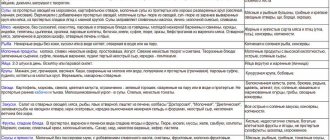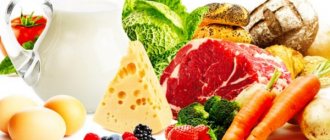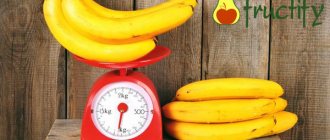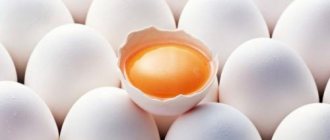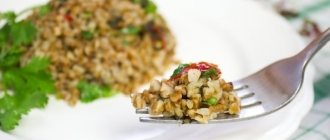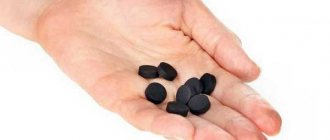03.11.2020 Alena Masheva Health
Banana is an overseas fruit that is particularly nutritious. Based on it, many diets are prepared to normalize body weight. The product is used to prepare extravagant dishes. However, this fruit is not always useful. Why is banana harmful? How to use it correctly? This is worth looking into.
Calorie content and product properties
Banana is the fruit of a herbaceous plant. The elongated cylindrical fruit has the shape of a crescent, and it does not grow on a palm tree, as many people believe. The birthplace of this product is Southeast Asia, but they have learned to grow it in the CIS countries.
How many kcal are in a banana (1 piece)? It all depends on the size of the ripe fruit. 100 grams contain an average of 95 kilocalories. Depending on the variety of banana, it can weigh from 150 to 250 grams. The energy value of some fruits reaches 200 kilocalories. The pulp contains many useful vitamins and microelements. Such fruits are especially rich in vitamins B, C, E. They contain large quantities of magnesium, potassium, phosphorus, fructose and fiber.

For an absolutely healthy person, such a product has many benefits. This fruit is great for snacking. Bananas leave you feeling full for a long time and have a positive effect on the functioning of the gastrointestinal tract. It can be consumed after food poisoning. Banana is excellent against diarrhea and constipation. The plus is that the product has no allergens. It is no coincidence that fruit is included in the diet of a baby in the second half of life.
Due to their high potassium content, bananas perfectly strengthen the skeletal system and stimulate brain function. The fruit normalizes the functioning of the cardiovascular system and restores blood pressure. The menu should include the product for people suffering from Alzheimer's and Parkinson's disease. Eating bananas in moderation has been proven to help stroke patients recover faster.
Banana is the “fruit of youth”. The product protects the skin from the negative effects of free radicals, improves vision and hearing.
Product varieties
How much protein and carbohydrates are in a banana? The indicators directly depend on the maturity of the product and its variety. The most common variety is Cavendish. These are the bananas that can most often be found on store shelves. The length of the fruit can reach 25 cm in length. 100 g of ripe fruit will contain about 2 grams of carbohydrates and up to 0.5 grams of fat. In green fruits the levels will be significantly lower. But the content of fats and carbohydrates in dried bananas increases significantly.
You can rarely find red and blue bananas in our stores. In such products the level of sugar and, accordingly, carbohydrates will be significantly higher. The product is widely used for making desserts. How many kcal are in a banana (1 piece)? The energy value of such exotic fruits will be slightly higher. On average, 10 grams contain up to 100 kilocalories.
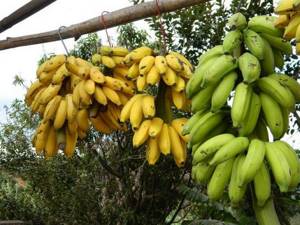
Why is banana harmful? The properties of the fruit directly depend on its ripeness. Many have noticed that the riper the product, the sweeter it is. This is due to the fact that the enzymes that make up bananas gradually destroy starch. As a result, monosaccharides and disaccharides are formed. This fruit will be less healthy than green fruit.
Which bananas are suitable for the diet?
Since bananas are the basis of the diet here, it is very important to choose them correctly. Unripe bananas contain insoluble starch, which is not absorbed by the intestinal tract. When consuming them, you may experience discomfort due to flatulence (accumulation of gas).
It is important to pay attention to their appearance - the peel should be thin and yellow, ripe bananas will be soft to the touch. You should not give preference to large fruits, because the body needs a medium-sized banana. If the hypermarket only sells green bananas, it is recommended to let them ripen. Be careful when buying fruits with thick skins - they are usually heat-treated.
The mono-diet uses only banana pulp. Before use, it is important to cleanse the skin and remove any “strings” from the surface so that you can get the most benefits. Dried bananas are higher in calories than the freshest ones, and the energy value of dry products averages 365 kcal per 100 grams.
Yellow fruit for diabetes. How much sugar is in a banana?
Diabetes is a dangerous disease that can lead to death if simple rules are not followed. The main risk factors include heredity. Many babies are already born with this disease. However, diabetes mellitus can also be acquired. The development of the disease can be triggered by poor nutrition, bad habits, and concomitant disruption of the endocrine system. People who are obese are twice as likely to develop diabetes. Therefore, if there are already people with this pathology in the family, special attention should be paid to the choice of products.
How many bananas can you eat a day? If you are predisposed to developing diabetes, there is no need to completely give up such a tasty fruit. However, its consumption will have to be limited. It is advisable to eat no more than three bananas per week. You will have to completely avoid overripe fruits with dark skin.
How much sugar is in a banana? 100 grams of overripe product can contain up to 20 grams. A ripe or greenish fruit of the same size contains no more than 12 grams of sugar.
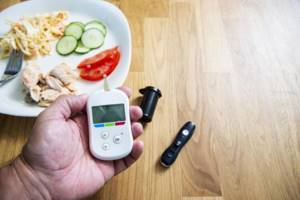
What to do if the diagnosis has already been made? Is it possible to include such fruit in the diet? You will have to give up foods containing “fast” carbohydrates. Bananas do not belong to this group, but they are also subject to serious restrictions. Unripe fruits can be added to fruit salads in combination with sour foods - green apples, kiwi. It is recommended to consume this dessert no more than once a week.
If you have diabetes, you will have to strictly follow a diet and control your blood sugar levels. It is important to constantly consult with an endocrinologist. The doctor will tell you why a banana is harmful in a particular case, and whether it can be included in your diet. Insulin-dependent patients will have to completely abandon this product.
Basic rules for losing weight
- 250 ml of smoothie can replace one meal.
- Up to 5 glasses of smoothies per day are allowed.
- It is not recommended to add sugar to the drink, but you can experiment with berries and other fruits, as they will only increase its benefits.
- Minor physical activity is allowed.
Several savory combinations or banana paired with:
- with milk;
- with strawberry;
- with apples;
- with orange;
- with chocolate syrup;
- with oatmeal cooked in water.
Mixing ingredients in a blender is only suitable for making cocktails.
Bananas and obesity
Many weight loss diets are based on this fruit. However, few people take into account that bananas are high in calories. If you use this product incorrectly, you can increase your weight even more. Nutritionists recommend that people suffering from obesity avoid this fruit altogether.
First of all, you should find out what causes obesity. It is possible that drug therapy will have to be carried out, and diet alone will not be enough. The problem is that fat masses can be deposited not only directly under the skin, but also around organs. This condition already threatens the patient’s life.
Why is banana harmful? In case of obesity, this product provokes even greater weight gain. If the patient eats a lot of fatty, salty and spicy foods and moves little, the problem will worsen even more. The risk group includes people with a predisposition to developing diabetes.
Secondary obesity deserves special attention. This pathology is also associated with excess weight gain. However, excess calories have nothing to do with the disease. The weight grows against the background of endocrine disorders in the body. Sharp weight gain can also occur while taking certain medications. In this case, there is no need to completely abandon exotic fruits. However, you should not eat bananas every day. The benefits and harms of the product must be assessed in advance; you can consult with your doctor. This will help avoid mistakes.
Menu for every day
1st and 3rd days - cottage cheese
- Breakfast: 120 g low-fat cottage cheese; banana.
- Lunch: a serving of dairy products; vegetable salad without dressing.
- Dinner: regular portion of cottage cheese; grapefruit or orange.
2nd and 4th days - banana
- Breakfast: fruit; 120 ml yogurt.
- Lunch: 2 bananas; Chicken egg with light broth.
- Dinner: 200 g of boiled meat; 2 small bananas.
Apple-banana
Another weekly diet for weight loss is eating bananas and apples. After the diet period, up to 7 kg are lost.

Menu
Monday:
- 6 green apples;
- 9 bananas;
- 2 liters of milk.
Tuesday:
- 3 unsweetened apples;
- portion of fruit and milk.
Wednesday and Thursday:
- apple;
- the usual amount of bananas;
- a couple of liters of milk.
Friday and Saturday:
- 6 green apples;
- portion of milk.
Sunday:
- 3 tropical fruits;
- 4 glasses of milk.
The specified amount should be divided into 5-6 doses. In addition, you should drink unsweetened tea and still water.
On a banana smoothie
Anyone who watches their figure and chooses proper nutrition understands the benefits of smoothies. It tastes great and at the same time has the ability to burn fat.
It is not necessary to practice such a weight loss program for a week, but it will be enough to lose up to 4 kg.
Video recipe:
Losing weight with bananas
If you want to get rid of a few extra pounds, a banana won't hurt. However, even in this case, the product should be used correctly. The duration of such a diet should not exceed 7 days. It is necessary to resort to such a solution to the issue of excess weight only if the gastrointestinal tract functions correctly and there are no chronic diseases.
How many calories are in a banana (1 piece) has already been described above. Based on these data, you can easily calculate how much fruit is needed to replace breakfast, lunch or dinner. An adult needs from 2000 to 4000 kilocalories per day. Breakfast should be the most nutritious, but dinner should be light. Fruits are recommended to be consumed in the first half of the day. However, we must not forget about the dangers of bananas on an empty stomach. The product contains large quantities of vitamin C, which can negatively affect the gastrointestinal mucosa.
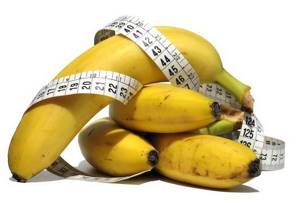
The banana-based mono-diet is popular. For several days you need to eat 3-4 bananas per day, alternating the fruit with low-fat kefir or milk. This diet allows you to quickly lose up to 5 extra pounds, but is quite aggressive. It is worth resorting to this technique after consulting a doctor.
Advantages and disadvantages
Pros:
- Bananas are delicious. This will make dieting not a burden, but a pleasure.
- Since these fruits are very nutritious, there will be no hunger for a long time.
- They contain potassium, which improves skin properties and metabolic processes.
- An ideal remedy for swelling.
- These fruits improve the condition of gastritis and stomach ulcers. When consumed, the secretion of mucus from the stomach walls increases, and the epithelium is restored.
- They cleanse the intestinal tract of harmful substances and toxins, so they do not cause constipation.
- By eating bananas, you can lose a decent amount of extra pounds.
- They perfectly cleanse the blood of harmful substances.
Flaws:
- Due to the very strict requirements of this diet, willpower is required.
- The diet consists mainly of bananas, so it can get boring towards the end.
- If you consume a huge amount of bananas, you may not lose extra pounds, but gain them.
Bananas and thick blood
It has already been said above that fruits perfectly strengthen blood vessels and help patients recover after a stroke. But there is another side to the coin. The product helps remove fluid from the body, which can lead to thickening of the blood. The result is life-threatening blood clots. How many bananas can you eat a day? One fruit will be enough.
Blood thickening is a dangerous condition that can lead to disruption of the functioning of the entire body. If signs of such a pathology appear, you must completely abandon bananas and seek qualified medical help. A change in blood consistency may be indicated by signs such as decreased concentration, chronic headaches, constant fatigue, and depression.

Serious diseases of the cardiovascular system, malfunctions of the spleen, a lack of certain vitamins, and general acidification of the body can provoke blood thickening. Only a doctor can find out the exact cause.
If your blood thickens, you will have to completely give up bananas only for a while until the condition returns to normal. Drug therapy will help you quickly return to normal. We must not forget about the drinking regime. The patient will have to drink at least two liters of clean water per day. Fruits such as kiwi, citrus fruits, strawberries, and pineapples are excellent blood thinners. In addition to bananas, you will temporarily have to give up baked goods, sweets, yeast, carbonated drinks, mushrooms and coffee.
Increased blood viscosity due to banana consumption is fraught with dangerous complications. If therapy is not started promptly, irreversible varicose veins may develop. In addition, it is recommended for men with potency problems to reduce their consumption of bananas. Due to increased viscosity, blood does not flow fully to the genitals. As a result, erectile dysfunction worsens.
If you eat bananas every day. What happens if you eat bananas every day?
Bananas can be bought all year round, which is why we use this product so often. In addition, it is praised and called very useful. Let's try to figure out what will happen if you eat bananas every day.
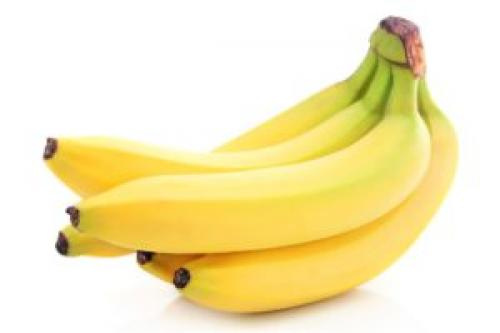
Do you know where we got the idea that bananas are very healthy? We start eating them when something hurts. They are allowed by doctors if someone is sick. They are usually called safe. This is what actually provoked such popularity of bananas.
It ranks 4th in the fruit sales ranking. That's why it's so important to know more about this product.
It is a very important source of potassium
It is involved in the release of insulin to control blood sugar levels. It also helps maintain normal blood pressure. It is not only sodium that controls this process.

One banana contains approximately 450 mg of potassium, and for normal functioning of the body a person needs 3500-4700 mg. As you can see, the dosage has limits. However, you remember that every organism is unique. The required amount of substances depends on many factors (lifestyle, weight, gender, age, etc.).
But the coin has two sides, and if you exceed the norm, you can get very bad consequences. Those with kidney problems need to be especially careful. You can't eat too many bananas. But keep in mind that not only bananas are sources of this substance. If you want to know more about sources of potassium, we will write an article on this topic. And as a bonus, we will now leave a list of the most accessible products that contain potassium. It is found in tomatoes, watermelon, spinach, beets, black and white beans, salmon, pumpkin, and yogurt.
Eating bananas means being very hardy
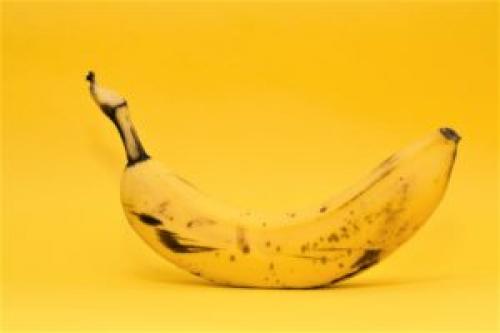
Carbohydrates are what you need. They are what feed the muscles. And their most digestible form is glucose, fructose or sucrose, which are included in sports cocktails. Recover faster, you can do more, you can do longer. But experts began to pay more and more attention to fruits. After a series of studies, a connection was discovered. For example, cyclists felt better after training if they ate an ordinary banana. But there is another side of the coin too. Eating banana too often resulted in flatulence. And this is not the most pleasant feeling.
Eat a banana and you'll be happy
This fact has long been known. Bananas contain tryptophan. This is an amino acid that the body converts into serotonin. And it improves our mood. And if we start from color, which is based purely on our conclusions, then it also evokes pleasant sensations. It immediately becomes warmer and more pleasant.
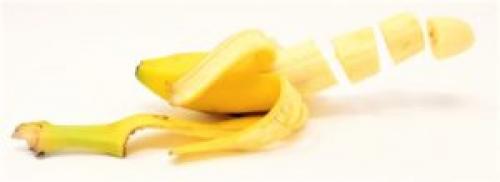
Effect on the cardiovascular system
Above, we already remembered the line between sodium and potassium. By the way, when potassium levels rise and sodium levels decrease, this will be an excellent prevention for the cardiovascular system. In this case, you can compare this effect of a banana with the effect of an avocado. You can read more about avocados on the website.
Benefits for the intestines
This product simply calms him down. For digestive problems, many doctors recommend an old and familiar diet. It consists of bananas, rice, applesauce and toast (but not for love, if you know what we mean).
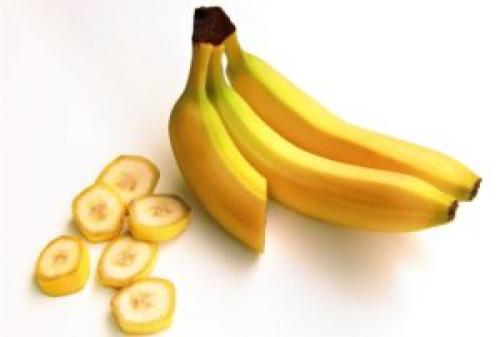
Well, it is necessary to say about fiber, which so carefully cleanses the intestines. And you can read more about it on the website. We have already left a very detailed article about it.
These are the beneficial effects of banana. You can eat bananas every day, but remember the importance of moderation. And in another article we will describe the other side of the coin. This product also has negative properties, but more on that later.
Gastrointestinal diseases
Many people notice that after eating a banana their stomach hurts. Such a symptom may indicate that the mucous membrane of the organ is damaged and it is necessary to undergo examination. Bananas have the ability to weaken. Therefore, if this fruit is consumed in excess, diarrhea may develop.
Increased stomach acidity deserves special attention. This pathology may be indicated by heartburn from bananas and other fruits, heaviness in the stomach, nausea after eating food. Violation of acidity is most often caused by a violation of the diet, as well as taking certain medications. Such symptoms are often observed during hormonal therapy. Increased acidity almost always accompanies diseases such as gastritis and ulcers.
Normal acidity can be restored with the help of medications and diet. There is no need to completely exclude fruits, but their quantity must be strictly controlled. It is advisable to avoid foods that are too acidic. Preference should be given to ripe bananas. It is recommended to consume no more than three pieces per week. You need to be prepared for the fact that gas may appear after eating a banana. Drugs such as Espumisan, Simikol, Infacol will help normalize the condition.
How many bananas can a child eat per day? Useful tips about bananas for little ones
When a mother decides whether to give her baby a banana or not, she is faced with a number of other questions: how much fruit will be safe for him, in what form they are better absorbed by the little body, what kind of bananas to choose for children and many other nuances. To relieve a woman of tension and headaches, we offer some very useful tips on how and how much banana to give a child in different years of his life.
- The banana that you choose for your baby’s diet should be ripe and bright yellow. The greenish fruits are not yet ripe and can cause stomach upset in the baby. Black spots indicate that the product has begun to overripe, which means it contains a lot of glucose - these are the bananas that most often cause allergies.
- Do not buy bananas for baby food at the market. In a couple of years, when the little stomach gets used to the fruit, please, but not now. At this stage, it is better to do this in a supermarket or any store where all goods are certified and tested. Of course, this does not provide a 100% guarantee that it is of high quality, but the chances of buying good fruit in the store are still higher than in the market, especially when the healthy nutrition of the baby is at stake.
- In a specialized store you can buy ready-made banana puree for baby food. You can cook it yourself. For the first time, it is recommended to process the peeled, cut into pieces fruit in a steam bath, mash it with a clean fork (or beat it in a blender) until puree and give it to the baby. Over time (a couple of weeks after the first time), heat treatment can no longer be carried out. In a month, the child can be given a banana without kneading it: he will happily suck it, try to gnaw it, sharpen his teething teeth on it and scratch his gums.
- The first time you introduce your baby to a banana is the most important. Firstly, do not go too far with dosages, even if the child liked the food and asks for more. Give him a small (teaspoon) of banana puree first. Secondly, carefully monitor the body’s reaction to the new product: whether a rash has appeared, or whether the stool has become too loose. If there are any deviations in the baby’s condition, it is recommended to give up banana for a while and return to it, say, in a month. If you suspect an allergy, be sure to consult a doctor.
- If everything goes well the first time, after a week you can give your baby a tablespoon of banana puree a day and gradually increase this dosage. By the age of 1, a child, without any fear, can eat half a banana a day, and not a grated one, but a whole one. A one and a half year old toddler can safely be given a whole fruit. Schoolchildren who need bananas to maintain mental and physical activity are recommended to eat 2 bananas a day. Add fruit to porridge - this breakfast will charge your child with energy for the whole day.
- To prevent your child from getting bored with the banana, you can add coconut flakes or crushed cookies to the baby’s puree: a varied diet will help make the dish even more tasty and valuable. For the very first time, in order to adapt a small stomach to a new dish, it is recommended to add specially expressed breast milk or the nutritional formula that you give to the baby to the banana puree.
Harmful substances in bananas
Banana is an exotic fruit. They have learned to grow it in Russia, but in most cases people have to buy products brought from other countries. To ensure that fruits do not lose their presentation for a long time and remain attractive during transportation, they are treated with special chemicals. Such substances can cause serious harm to health.
Pesticides are found in almost all bananas sold in supermarkets. Such chemicals can destroy pests and prevent the proliferation of pathogenic microflora. However, with prolonged use, pesticides have a negative effect on humans. The central nervous system is primarily affected. In addition, such substances significantly increase the risk of developing cancer.

The level of harmful substances in the home cannot be determined. However, certain actions will significantly reduce the risk of consuming such products. Only purchased bananas can be soaked for several hours in boiled water, then rinsed again, peeled and eaten. The smallest amount of harmful substances is contained in the central part of the pulp.
Ways to eat banana
Some people are harmed by overripe fruit, while others are harmed by green fruit. In order not to give up a tasty product completely, you can choose your own version of its use. You can make porridge or smoothies using bananas. Fried and dried fruits have a special taste.
For people who do not suffer from excess weight and high blood sugar levels, the following recipe is suitable. One ripe banana is cut into rings, mixed with a cup of yogurt or milk, and a teaspoon of peanut butter is added. You also need to add a few ice cubes. All products must be mixed in a blender. A delicious and nutritious cocktail is ready! With this dish you can easily satisfy your hunger. Only bananas in this form will be unsafe for the pancreas. The benefits and harms of the product for diseases of the gastrointestinal tract were described above.
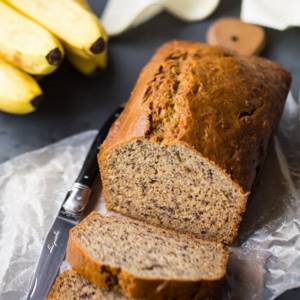
What to do if the fruit has turned brown (overripe)? You can give the product a second life and prepare a truly healthy dish. Banana bread is a great addition to your daily diet. Diabetics will have to avoid this product. To make bread you will need the following ingredients:
- 3 overripe bananas;
- 1.5 cups flour;
- 1 cup of sugar;
- salt to taste;
- 1 egg.
Mash the bananas to a puree, add other ingredients, and mix everything thoroughly. The dough is placed in a cake pan and baked for 40 minutes in an oven preheated to 170 degrees.
How else can you cook bananas? The harm to weight loss can be reduced if you consume the product as part of fruit salads. It is recommended to season such desserts with low-fat kefir or yogurt.
Diet Variations
A mono-diet is not suitable for everyone and can negatively affect your well-being and appearance. In particular, nutritionists have created more balanced, but no less effective methods, which you will learn about below.
Bananovo - dairy
Skim milk helps add variety to your fruit diet. If this product is unbearable, it can be replaced with low-fat yogurt.
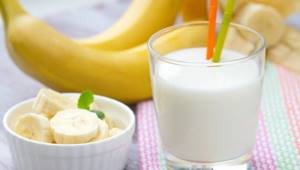
Gentle
During the day, eat 4 bananas and drink 1 liter of milk, dividing the product into 5-6 doses. It is not prohibited to use them separately or make a cocktail from them by mixing a glass of milk and one fruit in a blender or with ice cream. You are allowed to drink plain water. Girls lose an average of 700 grams. More than 10 days of such a diet is not recommended.
Strict
Duration - 5 days. The diet includes 5-6 meals, consisting of 3 fruits and 250 ml of skim milk. You can drink water and unsweetened green tea in any quantity; it is better to avoid eating after 6 pm. The diet allows you to lose up to 5 kg.
Kefir with banana
If milk isn't really your thing, but you want to lose weight, try replacing it with kefir. The diet is designed for 3 days and has several options.
Hard
The daily menu consists of 3 fruits and 250 ml of 1% yogurt. Break this down into 6 equal portions per day. You can experiment - eat bananas and drink dairy products, make yogurt or fruit salad. There are no restrictions on water, herbal or green tea.
This program makes it possible to lose weight by 5 kg.
Gentle
For 5-7 days you need to eat bananas (daily norm - 1.5 kg) and kefir (no more than a liter per day), you are allowed to eat 30 g of porridge cooked in water, without adding sugar, salt and oil, or 50 g of low-fat boiled meat - beef, turkey, chicken, rabbit.
Curd and banana
The 4-day weight loss program allows you to eat cottage cheese and bananas. It will help you lose up to 4 kg. The point is to alternate cottage cheese and fruit days. The diet is easy and very popular among those who want to lose weight.



